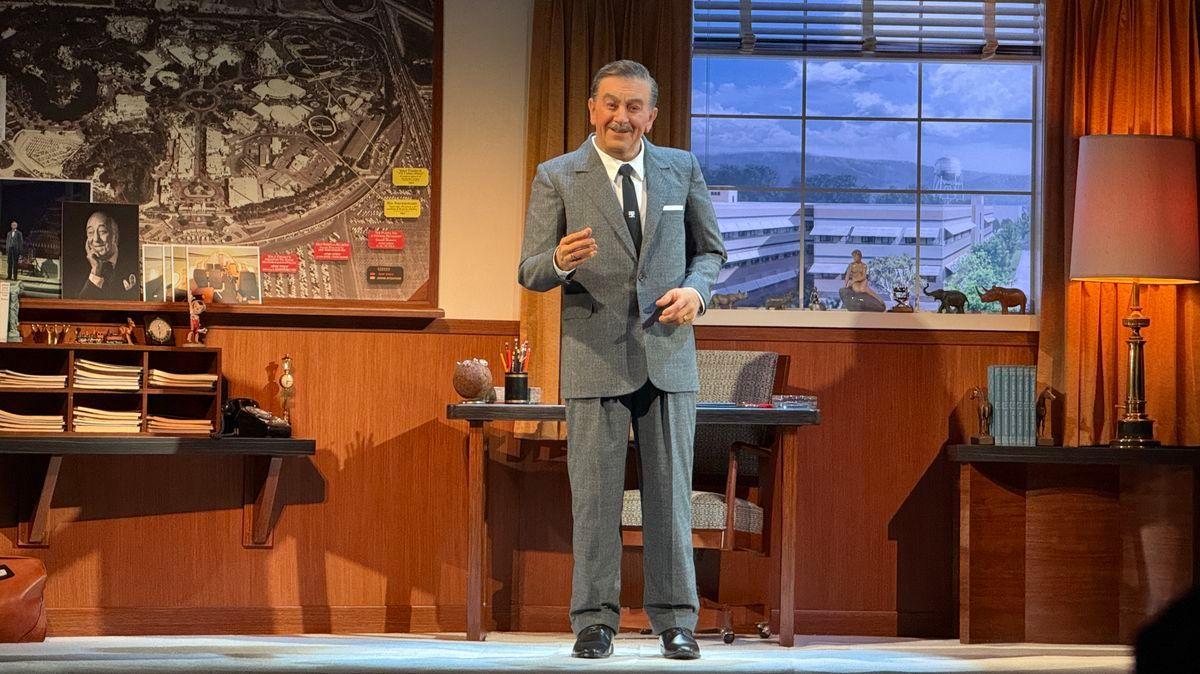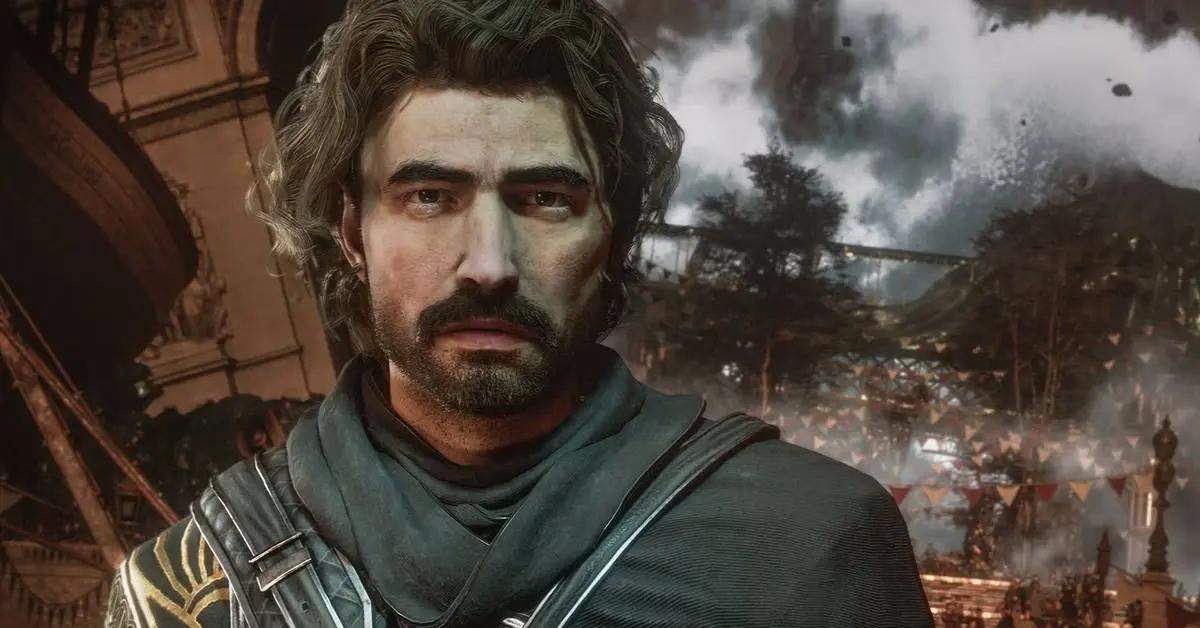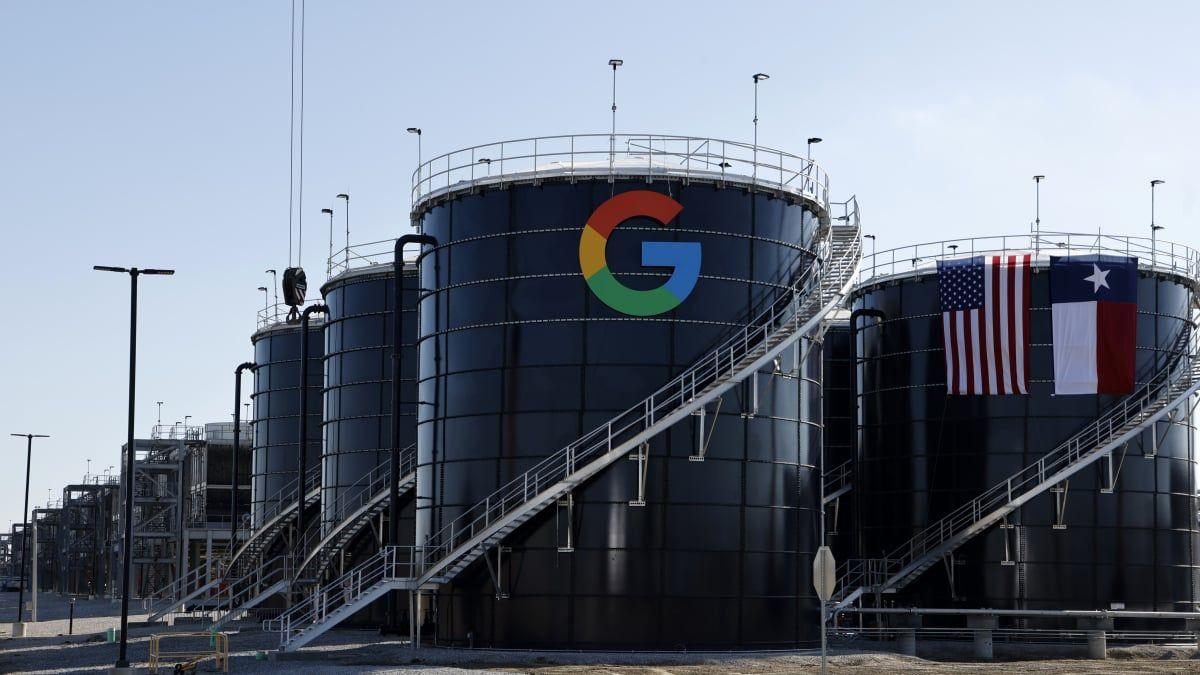Disney Unveils AI-Powered Olaf Robot: Next-Generation Character Technology Transforms Theme Park Experiences
4 Sources
4 Sources
[1]
Frozen's Olaf comes alive with Disney's next-gen robotic tech
This marriage of art and AI allows engineers to iterate quickly, refining gait, style, and personality until Olaf moves exactly as imagined by animators. To scale that process, WDI has been developing Newton, an open-source simulation framework built with NVIDIA and Google DeepMind. Laughlin describes it as a system where "building blocks enable the rapid development of GPU-accelerated simulators." One key component, a simulator called Kamino, boosts the speed at which robots learn. With it, characters like Olaf can master complex motion -- walking, gesturing, interacting -- in dramatically less time. These breakthroughs help translate animated, often physically impossible movements into convincing real-world performances. Olaf's fully articulating mouth, expressive eyes, removable carrot nose, and conversational abilities are supported by these AI-trained motion layers. And the process keeps accelerating. "What's so exciting is that we're just getting started," Laughlin said. The rapid evolution from the BDX droids to self-balancing H.E.R.B.I.E. and now Olaf shows how quickly Disney can now prototype and deploy new characters.
[2]
Disney Parks debuts new AI-powered Olaf robot
The magic that powers Disney parks around the world is getting an AI upgrade. The entertainment giant's parks division has released the first look at a new, AI-powered Olaf animatronic in a series of social media posts and a short YouTube documentary, showcasing the robot's ability to independently navigate around the park, move its limbs and facial expressions, and engage in Frozen-themed banter with guests. In promotional videos of the new robot, Olaf waddles through Disneyland Paris' World of Frozen land at a quick pace as the park's experts explain how he works. At one point, the animatronic stops between them, looks up, and, waving his stick arm, says a bright "Hello!" Disney's crafty Imagineers designed the new generation animatronic using a form of artificial intelligence called reinforcement learning, allowing the self-propelling robot to mimic motions and navigate and interact with its environment independently. Disney partnered with NVIDIA and Google DeepMind to build a new open-source simulation framework called Newton and an accompanying simulator called Kamino to power the robotics. The robot's nose and arms are also removable, just like in the films, and iridescent fibers were embedded across it's body to mimic magical snow. With additional AI powering its ability to speak and respond to guests on its own, Disney has called it the most expressive and true-to-life characters it's ever built. "This debut marks a new chapter in Disney character innovation, one where technology, storytelling, and collaboration come together to bring screen to reality," the company wrote in a blog post, noting it plans to expand to the line of robots in the future. "The BDX Droids, self-balancing H.E.R.B.I.E., and now Olaf represent increasing levels of performance and innovation in bringing Disney characters to life. The speed at which we can create new characters and introduce them to guests is unprecedented." The Olaf robot will start interacting with guests at Disneyland Paris soon, according to Disney, and will make limited appearances at Hong Kong Disneyland Resort. Watch Disney's latest episode of "We Call It Imagineering," it's behind-the-scenes YouTube show, to see more:
[3]
Robot Olaf From Frozen To Haunt Disney Parks Next Year
Walt Disney Imagineeringâ€"the research and development arm of the Disney parksâ€"will debut a new robot in its Disneyland Paris and Hong Kong parks. Frozen fans will certainly be excited to see Olaf the snowman stumbling around the World of Frozen area of Disneyland Paris and Hong Kong Disneyland early next year, but those of us who have always found the icy sidekick unnerving will not be pleased. Disney's dedicated an entire episode to Olaf and its history of robots on its Walt Disney Imagineering YouTube channel. Olaf was created inside Disney Research's Zurich, and is decidedly smaller than the Olaf's human-sized character that goes to Disney meet and greets. He appears to be just under hip height. It seems like he'll be wandering Disney aimlessly, cursing parkgoers with his unhinged laugh. "Our latest Olaf is a fantastic example of representing an animated character as authentically as possible in the physical worldâ€"a challenging task because animated characters most often move in non-physical ways,†Kyle Laughlin, senior vice president of Walt Disney Imagineering Research & Development, said in a news release. “For example, to make Olaf’s snowball feet move along his body, we paired state-of-the-art deep reinforcement learning with an artistic interface and advances in mechanical design.†Because Olaf is an animated characterâ€"and not inherently a robot, like Star Wars droidsâ€"Disney had to make "fundamental additions to our reinforcement learning framework to boost the believability of the character by enabling motion at the limit of hardware," Laughlin said. So, for instance, Olaf's body is softer, like snow, and you can pull off his nose. The Disney engineers in the video said they used reinforcement learning techniques to teach robots like Olaf and other droids how to act like their characters by 'watching" artist-made animations. They've been through a bunch of iterations throughout the years, starting with a small, humanoid robot that's shown in the YouTube channel being tripped by a stick. The BDX droids are featured heavily in the episode, too, showcasing how Disney made them more autonomous. They've got "eyes" and "ears" to compute what's going on in the world using AI. So, for instance, if a person kneels down in front of a droid, it'll move its head to look at the person directly. If they stand up, the droid looks up. It also shows the engineers "choreographing" a performance between three droids that gets recorded to be "played back" as a performance at the parks. And they do that by controlling the droids with what looks like Steam Decks. It's described as "building blocks for the autonomous show." Olaf is the next progression of Disney's robots, but Disney isn't clear how Olaf will workâ€"whether it'll need to be partly controlled by a human or not. The "self" in "self-walking robot" seems to imply that it'll do a lot of the work itself, though.
[4]
New realistic Disney robot will change parks experiences
Nvidia's CEO Jensen Huang presented an AI-powered "Star Wars" droid and showcased its abilities at Nvidia GTC in San Jose. * Disney Imagineers have created a new, life-like Olaf robot that will debut in Disney parks next year. * The robot is part of a larger effort to bridge the gap between on-screen characters and real-world park experiences. * This new generation of robotics builds on Disney's history, which began with audio-animatronics in 1963. GLENDALE, Calif. -- Do you want to build a snowman? Disney has, and it's unlike anything you've seen in person before. Disney Imagineers have created a new Olaf robot that looks and sounds like he's shuffled off the screen in stocky little snow feet with spindly twig arms, wonder-filled eyes and a detachable carrot nose. "So real and amazing and funny and sweet and charming," Walt Disney Imagineering President and CEO Bruce Vaughn told USA TODAY. "Everything that you dreamt would be like if you could actually meet him, but never thought you could." "Frozen" fans can get their first look at the waist-high robot on a new episode of Walt Disney Imagineering's YouTube docuseries, "We Call It Imagineering." I had a chance to see him myself at Imagineering's traditionally secretive Research and Development lab in Glendale, but Olaf wasn't the only thing that wowed me. What I saw will change the way we all experience parks. Bridging film and reality You cannot convince me that the BDX Droids I interacted with were not alive. The adorable, pint-sized, "Star Wars"-inspired droids have already made a few appearances at Disney properties and will make their big-screen debut next year in "The Mandalorian and Grogu." Seeing them waddle around like ducklings, curiously turning their heads when I spoke, they felt full of personality and life. In actuality, they've been programmed with thousands of hours of artificial intelligence-powered reinforcement learning, in partnership with NVIDIA. "The joy is so incredible that we forgot about the technology, and that's exactly the point," NVIDIA Founder and CEO Jensen Huang says in the Research & Development episode of "We Call It Imagineering." Another such robot is the Fantastic Four's H.E.R.B.I.E., who debuted at Disneyland the same day that "The Fantastic Four: First Steps" opened in theaters this past summer. When I saw him at Imagineering, I marveled at how he managed to roll around and keep balance on a single ball, as fluidly as on film. While these appearances have been limited in nature so far, guests can expect to see more down the line, as the bridge between on-screen and real-world experiences narrows. "In all my years, I've never felt so tightly connected to those creating the media," said Vaughn. Bringing Olaf to life Olaf will make his park debut early next year at the upcoming World of Frozen at Disneyland Paris and the existing World of Frozen at Hong Kong Disneyland. "He can actually just walk around, and because of the new reinforcement learning and use of AI for design, we can use the same animators who brought the animated character to life to bring this one to life, so there isn't a loss of translation there," Vaughn said. "To have Olaf walk out like that, I think it just pushes people to (believe) ... We met Olaf. It was actually the real Olaf," he added. Unlike the larger-than-life meet-and-greet character in parks like Disney's Hollywood Studios, the robot is much smaller, the same small scale as in the films. He also speaks, voiced by Josh Gad, like in the films. Vaughn said they were still playing around with whether to give Olaf physical eyes or projection ones. Imagineers have made tremendous progress in projection-mapping technology since the current figures of EPCOT's Frozen Ever After debuted. "You have to also meet your guests where they are, and the guests are getting more and more sophisticated, and expectations get higher," he said. It all started with a ... bird Walt Disney famously credited Mickey Mouse for his impact on the world, but when it comes to robotics, he and early Imagineers broke ground with the birds they created for Walt Disney's Enchanted Tiki Room, which debuted at Disneyland in 1963 as the world's show to feature audio-animatronics. A year later, Disney's audio-animatronic Abraham Lincoln debuted at the 1964 World's Fair and looked so real that some spectators thought it was a live actor. In more recent years, I've heard a similar debate among casual park goers at Disney California Adventure, where a Spider-Man stuntronic designed by Imagineers flips and flies through the air at Avengers Campus. "A human could not perform those flips," Vaughn said. "They could be done in CG, they could do it in hand drawing, but you certainly couldn't do it multiple times a day. So how do we deliver on that moment that you never thought you would see with your own eyes of Spider-Man literally flipping through the air like that? ... That's what we want to do." Just like audio-animatronics, now commonplace across theme parks and entertainment experiences, these new emerging robotics will shape the park experiences of tomorrow. Olaf is just the next step. The reporter on this story was provided access by Disney. USA TODAY maintains editorial control of content.
Share
Share
Copy Link
Disney's Imagineering division debuts an autonomous Olaf robot using advanced AI and reinforcement learning, marking a breakthrough in bringing animated characters to life in theme parks through partnerships with NVIDIA and Google DeepMind.
Disney's AI-Powered Character Revolution
Walt Disney Imagineering has unveiled its most advanced robotic character yet: an autonomous Olaf from Disney's "Frozen" franchise that will debut at theme parks in early 2025. The waist-high robot represents a significant leap forward in Disney's quest to bring animated characters authentically into the physical world
1
2
.
Source: USA Today
Unlike traditional meet-and-greet characters, this Olaf operates independently, navigating park environments while maintaining the beloved character's personality and mannerisms. The robot features a fully articulating mouth, expressive eyes, a removable carrot nose, and conversational abilities powered by Josh Gad's original voice work
4
.Advanced AI and Simulation Technology
The breakthrough lies in Disney's partnership with NVIDIA and Google DeepMind to develop Newton, an open-source simulation framework that accelerates robot development. Kyle Laughlin, senior vice president of Walt Disney Imagineering Research & Development, describes Newton as a system where "building blocks enable the rapid development of GPU-accelerated simulators"
1
.A key component called Kamino dramatically reduces the time needed for robots to master complex motions. Through reinforcement learning, characters like Olaf can learn walking, gesturing, and interaction behaviors by "watching" artist-made animations, allowing engineers to iterate quickly on gait, style, and personality until movements match animators' original vision
2
.Bridging Animation and Reality
The challenge of translating animated characters to physical robots is particularly complex because animated movements often defy physics. "Our latest Olaf is a fantastic example of representing an animated character as authentically as possible in the physical world—a challenging task because animated characters most often move in non-physical ways," Laughlin explained
3
.To achieve this authenticity, Disney made "fundamental additions to our reinforcement learning framework to boost the believability of the character by enabling motion at the limit of hardware." The robot's body incorporates softer materials to mimic snow, while iridescent fibers embedded throughout create a magical snow effect
2
.
Source: Mashable
Related Stories
Evolution of Disney Robotics
Olaf represents the latest evolution in Disney's robotic character development, following the BDX droids and self-balancing H.E.R.B.I.E. The BDX droids, which will appear in the upcoming "The Mandalorian and Grogu" film, demonstrate advanced environmental awareness through AI-powered "eyes" and "ears" that allow them to respond naturally to guest interactions
4
.H.E.R.B.I.E., from the Fantastic Four franchise, showcases Disney's ability to create robots that maintain balance on a single ball while moving fluidly, matching their on-screen counterparts. These developments build upon Disney's pioneering work in audio-animatronics, which began with the Enchanted Tiki Room birds in 1963
4
.Park Deployment and Future Plans
Olaf will begin interacting with guests at Disneyland Paris's World of Frozen area and make limited appearances at Hong Kong Disneyland Resort in early 2025. Disney President and CEO Bruce Vaughn emphasized the transformative nature of this technology: "So real and amazing and funny and sweet and charming. Everything that you dreamt would be like if you could actually meet him, but never thought you could"
4
.The company plans to expand this line of autonomous characters, with Vaughn noting unprecedented speed in character development: "The speed at which we can create new characters and introduce them to guests is unprecedented"
2
. This marks what Disney calls "a new chapter in Disney character innovation, one where technology, storytelling, and collaboration come together to bring screen to reality."References
Summarized by
Navi
[1]
[2]
Related Stories
Nvidia, Disney, and Google DeepMind Collaborate on AI-Powered Robotics with 'Newton' Physics Engine
19 Mar 2025•Technology

Disney Imagineers Bring Walt Disney to 'Life' with Groundbreaking Audio-Animatronic
16 Jul 2025•Technology

Disney Plus Plans AI-Generated Content Features as Part of Major Platform Overhaul
13 Nov 2025•Entertainment and Society

Recent Highlights
1
Google launches Gemini 3 Flash as default AI model, delivering speed with Pro-grade reasoning
Technology

2
OpenAI launches GPT Image 1.5 as AI image generator war with Google intensifies
Technology

3
OpenAI launches ChatGPT app store, opening doors for third-party developers to build AI-powered apps
Technology





